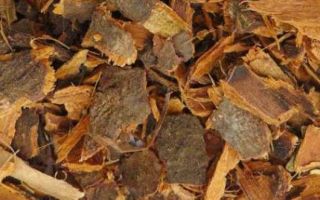Buckthorn is a tall shrub or small tree with almost black, cracked bark.
Content
Description and composition
Flowering time is May-July.
Ripe fruits and bark are used for treatment.
Collection is carried out in early spring before the leaves appear. Young bark of trunks and branches is harvested for future use.
fruits contain:
- vitamin C,
- anthraderivatives - rhamnocarthia, rhamnoxarthia, frangulaemdin, joxteria;
- flavonoids - rhamnocinthrin, xanthoramenthin, rhamnetin, quercetin, kemaferol;
- pectin and dyes;
- camel;
- bitter substance.
Basic composition of the bark :
- glycosides,
- saponins,
- flavonoids,
- alkaloids,
- organic acids,
- vitamin C,
- coumarins,
- Sahara,
- starch,
- pectins,
- ash,
- macroelements - potassium, calcium, manganese, iron,
- trace elements - magnesium, copper, zinc, cobalt, chromium, aluminum, barium, vanadium, selenium, nickel, strontium, lead, boron, iodine,
- resins,
- bitterness,
- tannins.
Properties
The plant has medicinal properties such as:
- mild laxative,
- carminative,
- anthelmintic,
- anti-inflammatory,
- choleretic,
- antipyretic,
- diaphoretic,
- antitumor,
- wound healing,
- antimicrobial.
Has a good effect on the small and large intestines, stomach, liver, spleen, pancreas.
For what diseases is it used?
A decoction of the fruit and bark is a gentle laxative that works well for chronic constipation.
The effect of the decoction develops slowly and lasts a long time. The fruits are included in laxative preparations. It should be noted that when taken for more than a month, addiction occurs and the intestines stop working on their own.
For liver diseases and hemorrhoids, a decoction is made to cleanse the body using a glass of boiling water per teaspoon of the collection; this drink is used 5 times a day, 1 teaspoon before meals.
In addition, the bitterness and other beneficial substances it contains help normalize metabolism, so it can be used for obesity.
Getting rid of excess weight is achieved by reducing swelling, cleansing the intestines, and accelerating metabolism. If you drink the bark continuously for a week, the absorption of calories in the intestines deteriorates. This way you can lose one size when there is an important event coming up and you can’t fit into the dress. However, this is a temporary solution to the problem and the fat will not disappear. Moreover, prolonged use of the decoction can lead to real problems - addiction and constipation due to withdrawal.
Contraindications
The plant, especially the bark, should not be used during pregnancy, if you are prone to spasms and narrowing of the intestines, allergic reactions; the dosage must be observed, otherwise abdominal pain and a feeling of discomfort may appear.
It is recommended to take bark that has been aged for at least 1 year in a dry place; fresh bark can cause nausea and vomiting; With prolonged use, addiction occurs.
Methods of application
A decoction or infusion is prepared from the fruits.
The decoction is prepared as follows - boil 1 tablespoon of buckthorn berries in 1 glass of water, leave for 2 hours, strain. Take half a glass at night.
To prepare the infusion, infuse 1 tablespoon of berries for 12 hours in 1 glass of cooled, boiled water, strain. Take half a glass in the morning and evening.
To prepare a laxative and intestinal cleansing decoction from the bark, you need to pour 2 tablespoons of the raw material into a glass (250 mg) of boiling water, place in a water bath and leave for half an hour, then cool, strain, add boiled water to the original volume. Use half a glass in the morning and evening, but not more than a month.
The bark is harvested according to the usual rules, dried in the open air or in a dryer. However, to destroy harmful substances, it should be kept at a temperature of 100 degrees for an hour before drying.
When fresh, the bark has an unpleasant taste and smell, which disappear when dried.







